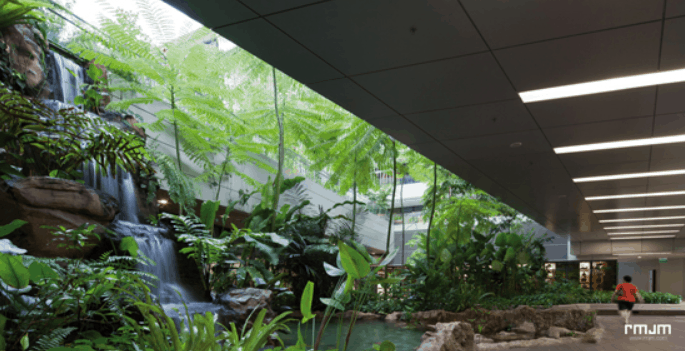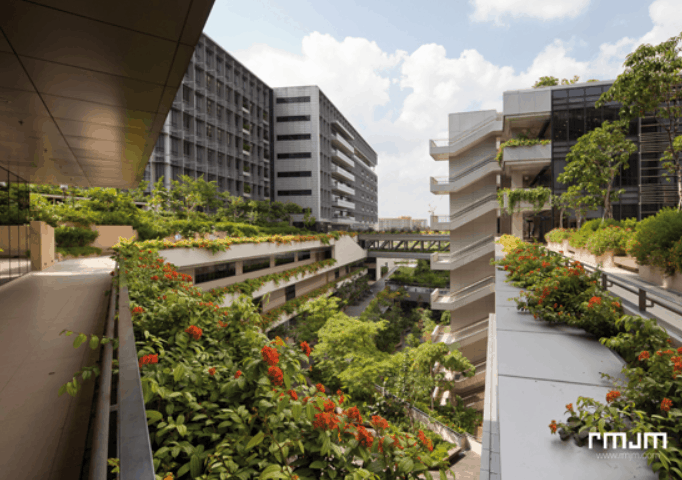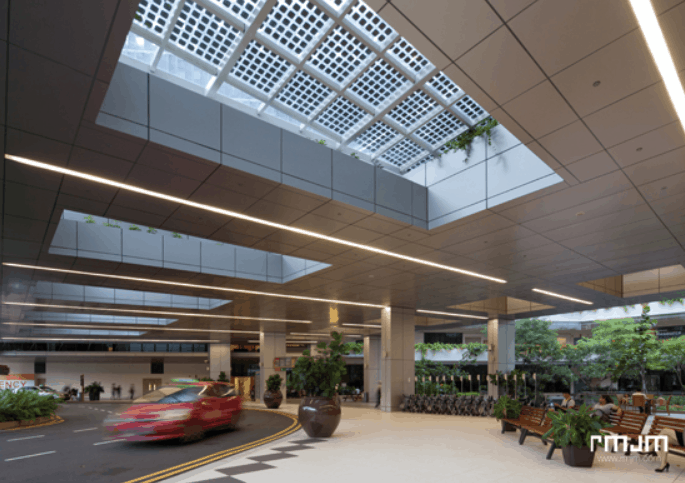Blog
One of the Best Biophilic Hospitals

Design Curial, took a look at the best architecture and design projects that bring nature into man-made spaces. In an article published last year, they rated 10 of the best biophilic buildings in the world. Even though they all were amazing and caught my eye, I want to highlight the healthcare contender because Biophilic Design supports the health and healing of patients. View the original article.
The Best Biophilic Hospital
Khoo Teck Puat Hospital
Location: Yishun, Singapore
Architect: RMJM
Completed: 2010
What I found most interesting about this hospital is the design goes beyond the plants and greenery. Although it is the most noticable biophilic design aspect, it certainly isnt the only one implemented. The designers and engineers paid particular attention to the use of natural light and how to engineer the space to best take advantage of the air flow and cooling systems.
Biophilic designer Oliver Heath says: ‘Biophilic design is more than just bringing the outside in, it’s about making and strengthening a connection with many aspects of nature. It’s about natural light, views on nature, plants, natural materials, textures and patterns.’

About the Space
While all kinds of spaces inhabited by human beings – from offices to high-rise apartment buildings – can benefit from biophilic design, hospitals, where biophilic design is perhaps most urgently needed, are often as far from nature as it’s possible to get in a man-made space. Cost is often cited as a reason – or an excuse – for this. However, there are exceptions, notably the Khoo Teck Puat Hospital, which serves the healthcare needs of more than 700,000 people living and working in the north of Singapore.

Overlooking the scenic Yishun Pond, the Khoo Teck Puat Hospital is designed to be patient-friendly. The 10-bed C-class wards is divided into two sections, each with its own toilet and shower facilities. There is only one drop-off point for the hospital and the distance from it to the emergency department is only 20 metres, while the distance to the specialist clinics is between 20 and 40 metres. There are no protruding sinks or cupboards in the wards so patients are less likely to hurt themselves.
Natural Lighting and Airflow

Fins along the building’s walls are designed to channel the prevailing north-east winds into the building. Wind tunnel tests conducted at the National University of Singapore found that these fins would enhance the airflow by 20 to 30 per cent. Sunshades over the windows protect patients from the direct glare of sunlight. The shades also re-direct light towards the ceiling to enhance the brightness of the wards and save energy. Large fans in public areas are powered by solar panels on the roof. The air-conditioning system draws supply air from its internal courtyards, where the air is cooler, thus reducing the cooling loads.
Marie Wikoff is the creator of Wikoff Design Studio based out of Reno, Nevada. Her expertise in healthcare design has helped modernize healthcare organizations locally, regionally, and internationally, improving patient experience and outcomes. Her credentials include Evidence-Based Design Accreditation and Certification (EDAC), American Academy of Healthcare Interior Designer (CHID), the National Council of Interior Design Qualification (NCIDQ) and LEED AP. Contact Marie Wikoff
Source
“Biophilic Design and Architecture – 10 of the Best Biophilic Buildings.” DesignCurial, 8 Feb. 2019, www.designcurial.com/news/biophilic-design-and-architecture—10-of-the-best-biophilic-buildings-4527750/7.







